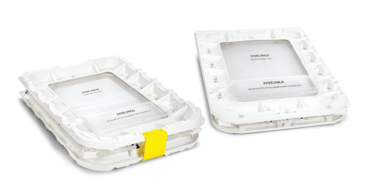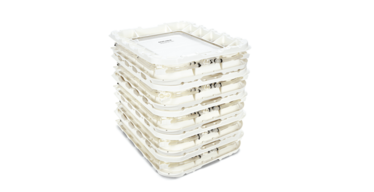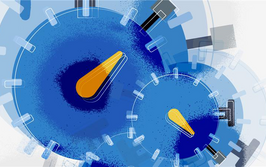
Switching From Bottles to Bags: Robust by Design
Single-use technology continues to evolve; single-use bags are now a robust and effective alternative to using bottles in freeze and thaw operations
Lorraine Borland |
sponsored by Sartorius
Is your company pondering whether to make the switch from bottles to single- use plastic bags? No change is ever risk- free, so is the move to bags worth it? Marion Monstier, Product Manager for Freeze and Thaw at Sartorius, says that, as far as the freezing and thawing of critical drug substances is concerned, the answer is yes. In fact, single-use bags offer many benefits when properly designed for such freeze and thaw applications. Here, she weighs up the pros and cons of bottles and single-use bags, and what it takes to integrate single-use bags into facilities new and old.
What challenges do companies face when it comes to the freezing and thawing of high-value drug substances?
As these drug substances are high-value critical products, one main challenge when reaching the downstream process steps is to start working in an aseptic manner to ensure the safety and purity of the product. It is important to avoid any contamination and keep the product stable.
Freezing is a common way to keep drug substances stable for storage and/ or shipping to the drug production site; however, different biologic molecules have different sensitivities to freeze and thaw cycles. Some require fast freeze and thaw cycles to avoid denaturation or cryo- concentration, for example. And that’s an important parameter to consider when working on freeze and thaw processes.
When production ramps up, the overall process time and associated footprint can become not only challenging to manage but also expensive. In such cases, the company must respond by optimizing the process to maximize efficiency.
How do single-use bags compare with bottles in terms of overcoming these challenges?
Single-use bags are sterile, ready-to-use, closed systems – three properties that greatly simplify processes. When using bottles, working in an aseptic manner is a more complex affair, usually requiring a laminar flow hood and additional filtration steps. Bottles also require manual intervention and a higher number of operators, who must be trained in aseptic techniques so that the risk of human error can be reduced. Single-use bags, on the other hand, are plug-and-play aseptic systems that are easy to use.
Single-use bags also provide a reduced freezing path length, allowing for controlled, faster freezing and thawing. They are also better adapted for sensitive molecules than bottles. Bottles do not allow for any control of freezing profiles and typically do not prevent cryo- concentration effects.
What barriers do people associate with the shift to single-use bags?
When switching from one technology to another, companies may have concerns over changes in material and the associated additional validation workload; for example, stability studies and extractable/leachable profile characterization. But this workload can be significantly reduced by using the data generated and made available by the supplier.
End users also tend to associate changes in technology with a high CAPEX or large investments, but single-use is flexible enough to adapt to existing infrastructures. This flexibility helps avoid any extra investment in cases where the end user wishes to hold on to their existing equipment or freezer – but also support those cases where the end user wants to upgrade their freeze and thaw capabilities.
Finally, the switch from bottle to bag is sometimes perceived as hard to implement, as it requires the adaptation of existing standards of practice and handling procedures, as well as new operator training. However, as noted, single-use bags tend to simplify processes across the board. Of course, updates to existing documentation will be necessary, but ultimately the change from bottles to bags is all about the simplification of everything already in place.

Are there any benefits in terms of reducing overall footprint?
Bottles are cumbersome! They cannot be stacked, are not easy to transport via carts, and demand a great deal of storage space, especially when processing more than 100 L of product. Conversely, single-use containers made with bags have convenient stackability features integrated into their protective packaging concept that render them easy to store on racks and transport on carts.
For shipping, single-use containers made with bags can also be stacked and shipped in dedicated validated systems – some of which allow for up to 120 L shipments using a pallet base format that fits in passenger aircraft. Bottles tend to require additional packaging material such as Mylar bags, and are also not stackable for shipping; it may take several shippers to package and protect all the bottles lined up for shipment.
How do single-use bags help companies looking for improved robustness in design and quality?
In my view, single-use bags really are much easier to use and work with than bottles. Bags are a more reliable solution for processing drug substances because there is less potential for handling errors. Single-use products and their benefits are already well established in the biopharma industry, and have seen increasing use in freeze and thaw applications, evolving towards highly robust systems validated against every step in the life cycle of freezing containers: from filling to freezing, storage, shipping up, and thawing.
How easily can single-use bags be integrated into new and existing facilities?
Single-use bags are available in various types and sizes, which allows them to easily integrate with all forms of existing equipment and facilities without extra investment in cold rooms or conventional, upright, blast, or plate freezers. When switching from bottles to bags, the timespans needed for processing batches are drastically reduced, which cuts the overall production cost. Even if the bags cost more than the bottles as products, the total cost of ownership will shrink when companies finally choose to make the switch from bottles to bags. In one customer case, we were able to move from 40 or more hours to 10 hours for a 400 L batch, including quality control activities. However, the amount of reduction that can be achieved will vary in different cases depending on the starting base and the initial process.
Of course, most single-use suppliers also carry other relevant equipment in their portfolio, giving customers access to a complete platform in the case of new facilities or new projects where the end-users also wish to buy cutting-edge equipment. The cost of the equipment itself can vary greatly depending on its type; the least expensive being conventional or upright freezers, followed by blast freezers, and finally, plate freezers. Though plate freezers provide a higher level of advanced features and process control than all other options, the variety of options available means that companies of all sizes and capabilities can easily find equipment that is compatible with their single-use needs.
What makes a good single-use bag supplier?
That’s a good question! To ensure success when switching from bottles to bags, choosing the right single-use supplier is a key part of the process. It is important to consider a supplier with longstanding, recognized expertise. They should be able to offer advice regarding the technology to be used, provide consistent support as a consultant, and possess the capabilities necessary for the manufacture, testing, and release of the technologies in a reliable and consistent manner.
All in all, they should be able to help their partners recognize that single- use bags present numerous advantages over bottles that ultimately result in greater safety for both the product and the operator due to the process improvements they involve. The switch is not difficult to manage when you partner with a single-use supplier that can step in and offer support from beginning to end, including expertise, data sharing, and access to complete qualification packages.
Companies don’t need to embark on their single-use journeys alone!

Lorraine Borland is Product Manager, Viral Vaccines and Gene Therapy, at Sartorius



















